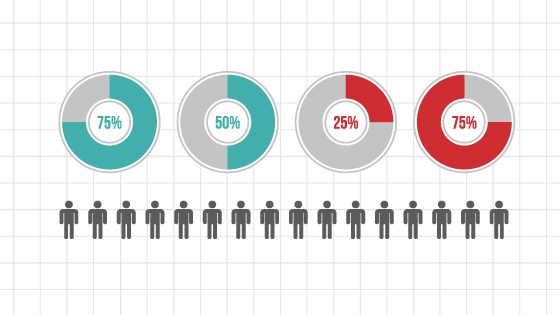
In the perfect business, your customers tell you exactly what they want, and you provide that for them. Unfortunately, the perfect business doesn’t exist.
Steve Jobs said, “People don’t know what they want until you show it to them.” While people may know what they don’t want, they usually struggle to understand what they do want. (Human behavior may not always be rational, but it’s definitely interesting.)
So how do you discover your customer’s needs if you can’t come right out and ask them?
Ask what they don’t want
Imagine someone is shopping for a new healthcare provider. Most people will struggle to answer a broad question such as, “What would your ideal doctor look like?” The most common answers are, “That depends” or “I don’t know.”
However, if you ask them what they don’t want in a doctor, that’s easier for them to answer. Your conversation might go something like this:
“What’s one thing don’t you want in a new doctor?”
“My doctor needs to be a woman. I’m uncomfortable with male doctors.”
“So you want a young female doctor?”
“No, I want someone with experience, but not too old or set in their ways. I want them to listen to me.”
You help your customers reach a decision more quickly when you focus on what they don’t want instead of what they do want.
How to use surveys
Surveys are an excellent way to ask your customers what they want. You may have tried using surveys before and either they were unhelpful or there was little response. Never fear. I’ll show you how to best use surveys and achieve greater engagement.
-
Ask what their biggest challenge or dislike is in whatever area you are focusing on. For example, a hospital might ask, “What is your #1 single biggest complaint when using emergency room services?” They may think they know their customers, but often the answers will surprise them.
-
Go from open-ended questions to more specific questions. Ask subsequent questions that will help you better understand the challenge shared in the first question. The hospital might ask more specific questions such as, “Regarding Question #1, what is one suggestion you have to improve the issue?” and “What is one more complaint you have about any ER service you’ve experienced?”
Notice how our questions become more focused. By the end of our survey, our customers will have told us exactly what they want.
Another advantage of asking these questions is that anyone who is not a good fit will not be interested in answering. Only those who actually have a problem you can solve will be interested in responding.
-
Do not offer any incentive other than a potential solution to their problem. If you reward people just for taking your survey, perhaps by offering a free gift, you’ll end up with many individuals who are only interested in the free gift and who are not a good fit for your business.
-
Use survey software that can display only one question at a time, such as SurveyMonkey, SurveyGizmo, or Google Forms. There are two advantages to presenting only one question at a time. One, the survey doesn’t seem so daunting and more people are likely to start answering your questions. Two, you can record all answers that are actually completed.
For example, in a typical survey, if you have six questions on one page and someone answers the first five and then gives up, you’ve lost the data for those first five questions. When you display the questions one at a time, you record the data for each question answered.
What to do with your survey data
Compile it. View it in a spreadsheet and sort the various columns. Pay attention to answers that appear the most. Pay the most attention to the answers provided by those people who write the longest open-ended questions because they are probably your most passionate customers. Respond to people who gave you their email (you did ask for that, right?), and design more surveys. Use the language your customers used for future blog post headlines or email subjects, and provide solutions to their problems.
Conclusion
They key to finding out what your customers really want is to ask what they don’t want. Use a survey the smart way and ask one question at a time. Start with their biggest complaint and then make your questions more specific until you find out what they actually want. You might be surprised how much they’ll tell you when you ask what they don’t want!

 Our content team is made up of thought leaders, strategists, and content creators who have more than 70 years of combined experience. With a wide variety of backgrounds as entrepreneurs, marketing gurus, healthcare associates, as well as plenty of experience in other industries, we help grow businesses with our relevant, trusted, and helpful resources.
Our content team is made up of thought leaders, strategists, and content creators who have more than 70 years of combined experience. With a wide variety of backgrounds as entrepreneurs, marketing gurus, healthcare associates, as well as plenty of experience in other industries, we help grow businesses with our relevant, trusted, and helpful resources.

